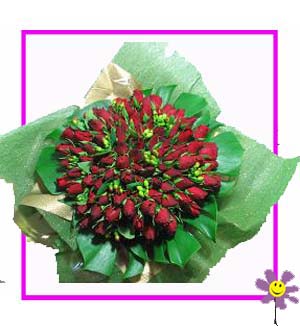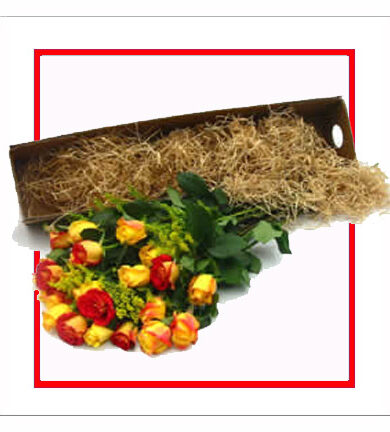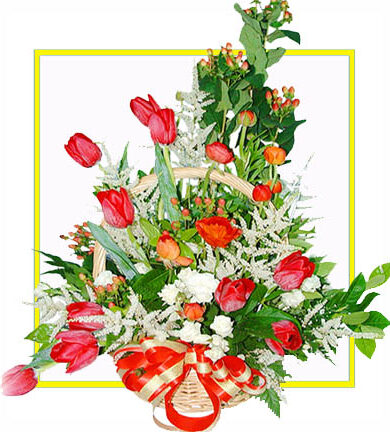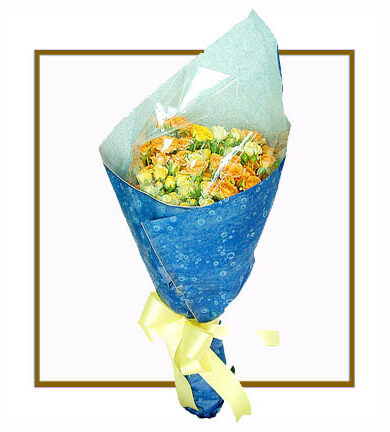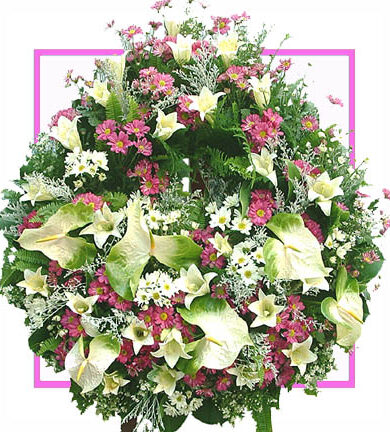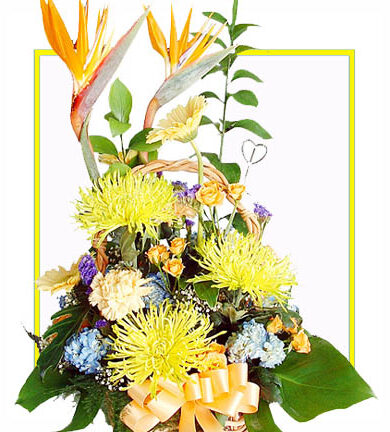Kozhikode (Calicut) offers fare to suit every palate. It is famous for Kozhikodan Malabar Biriyani. The city is also famous for Kozhikodan Haluva called as Sweet Meat by Europeans due to the texture of the sweet. Kozhikode (Calicut) has a main road in the town named Mittai Theruvu (Sweet Meat Street, or S.M. Street for short). It derived this name from the numerous haluva stores which used to dot the street. Another specialty is banana chips, locally known as nenthra-kaaya oopperi or just upperi, which are made crisp and wafer-thin. Other popular dishes include seafood preparations (prawns, mussels, mackerel) . Vegetarian fare includes the sadya. However, the newer generation is more inclined towards to Chinese and American food. Chinese food is very popular among the locals. |
The Kozhikode (Calicut) Monorail planned now under implementation stage.The construction will start by the end of 2012. The state government has submitted the proposal for the monorail project to the central government and is awaiting approval. It is an undertaking by DMRC.The routes planned: MedicCalicut Medical College-Meenchanda-Calicut International Airport .The monorail will connect through the railway station. The first phase of the project has an estimated cost of around 2000 crore, and is proposed for completion in three phases. It will reach to meenchanda. After completing this project, Kozhikode (Calicut) is the first city have Monorail in south India.The Kozhikode (Calicut) Monorail will be extended to Malapparamba, and plans exist to later extend it to Kunnamangalam. |
Many prominent writers of Malayalam literature hail from Kozhikode (Calicut). Among them are S. K. Pottekkatt, Thikkodiyan, U. A. Khader, K. T. Muhammed, Akbar Kakkattil, N. V. Krishna Warrier, N.N. Kakkad, M.P.Veerendra Kumar, P. Valsala and M. T. Vasudevan Nair. Sanjayan a known satirist was also from the city. S. K. Pottekkatt was a famous Malayalam writer, author of nearly sixty books which include ten novels, twenty-four collections of short stories, three anthologies of poems, eighteen travelogues, four plays, a collection of essays and a couple of books based on personal reminiscences. His biographical novel Oru Desattinte Katha won the Kerala Sahithya Academy Award in 1972, the Kendra Sahithya Academy Award in 1977, and the Jnanpith Award in 1980. |
A television transmitter has been functioning in Kozhikode (Calicut) since 3 July 1984, relaying programmes from Delhi and Thiruvananthapuram Doordarshan. Doordarshan has its broadcasting centre in Kozhikode (Calicut) located at Medical College. The Malayalam channels based on Kozhikode (Calicut) are the Darsana TV and Media One TV. All major channels in Malayalam viz. Manorama News, Asianet, Surya TV, Kairali TV, Amrita TV, Jeevan TV, Indiavision and Jaihind have their studios and news bureaus in the city. Satellite television services are available through DD Direct+, Dish TV, Sun Direct DTH and Tata Sky. Asianet Cable Vision popularly known as ACV telecasts daily city news. Spidernet is another local channel. Other local operators include KCL and Citinet. |
Pre-modern Kozhikode (Calicut) was already teeming with people of several communities and regional groups. Most of these communities continued to follow their traditional occupations and customs till the 20th century. These included Kosavan (potter), Vannan (washerman), Pulayan (agricultural worker), Chaliyan (weaver), Chetti (merchant), Thiyya (physicians, militia and toddy tappers), Ganaka (astrologer), Vettuvan (salt-maker), Paanan (sorcerer), Eravallan (firewood and grass carrier), Kammalas, Parayan etc. A number of Brahmins too lived in the city mostly around the Hindu temples. Regional groups like the Tamil Brahmins, Gujaratis and Marwari Jains became part of the city at various periods and lived around their shrines. |
The Muslims of Kozhikode (Calicut) are known as Mappilas, and according to the official Kozhikode (Calicut) website “the great majority of them are Sunnis following the Shafi school of thought. There are also some smaller communities among the Muslims such as Dawoodi Bohras. Many of the Muslims living in the historic part of the city follow matriliny and are noted for their piety. Though Christianity is believed to have been introduced in Kerala in 52 CE, the size of community in Malabar (northern Kerala) began to rise only after the arrival of the Portuguese towards the close of the 15th century. A few Christians of Travancore and Cochin have lately migrated to the hilly regions of the district and are settled there. |
The city has a reasonably well-developed transport infrastructure. A large number of buses, predominantly run by individual owners, ply on the major routes within the city and to nearby locations. City buses are painted green. Kerala State Road Transport Corporation (KSRTC) runs regular services to many destinations in the state and to the neighbouring states. The city has three bus stands. All private buses to the suburban and nearby towns ply from the Palayam Bus Stand. Private buses to adjoining districts start from the Mofussil Bus Stand (one of the largest bus stand in Kerala) on Indira Gandhi Road (Mavoor Road). Buses operated by the KSRTC drive from the KSRTC bus stand on Indira Gandhi Road. |
Kozhikode (Calicut) is one of the main commercial cities of Kerala. The economy is mainly business oriented. The city currently is the major trade hub of North Kerala with good connectivity through road, rail and air. It also has large timber yards along the banks of the Kallayi River. Kozhikode (Calicut) District with 8% of the state population makes 12% contribution to the state’s income. Kozhikode (Calicut) has witnessed a building boom in recent years. This is particularly evident in the number of malls and buildings built in recent years. Kozhikode (Calicut) is also going to be the first city in Kerala to have a mono rail transporting system.The KSRTC bus terminal which is under construction is the biggest bus terminal in Kerala. |
The beginning of western education may be traced back to the first half of the 19th century, when in 1848 the basal Evangelical Mission started a primary school at Kallai. In 1877, a school for the young Rajas was started in Kozhikode (Calicut). This was later thrown open to all caste Hindu boys. In 1879, it was affiliated to the University of Madras as a second grade college and with this, collegiate education in the district received a fillip. Secondary education recorded an appreciable progress since 1915. The erstwhile Malabar district, of which the present Kozhikode (Calicut) district formed a part, holds a high rank among the districts of Madras Presidency in secondary education. |
The Tamil Brahmins are primarily settled around the Tali Siva temple. They arrived in Kozhikode (Calicut) as dependants of chieftains, working as cooks, cloth merchants and moneylenders. They have retained their Tamil language and dialects as well as caste rituals. The Gujarati community is settled mostly around the Jain temple in and around the Valliyangadi. They owned a large number of establishments, especially textile and sweet meat shops. They must have arrived in Kozhikode (Calicut) at least from the beginning of the 14th century. They belong to either the Hindu or the Jain community. A few Marwari families are also found in Kozhikode (Calicut) who were basically moneylenders. |
A number of rivers originating from the Sahyadri run along the outer reaches of the city. These include the Chaliyar puzha, Kallayi Puzha, Korapuzha river, Poonoor puzha (river), and Iravanjhi puzha. Of these, Kallai river that runs through the southern part of the city has been the most important culturally and historically for Kozhikode (Calicut). The Kallai River has its origin in Cherikkulathur village. It is connected with Chaliyar on the south by a man-made canal. The river passes through Cherukulathur, Kovur, Olavanna, Manava and Kallai before finally joining the sea near Kozhikode (Calicut). The length of the river is 22 kilometres (14 mi). |
In the field of Malayalam language and literature, Kozhikode (Calicut) has made many significant contributions. A 17th century Zamorin king named Manavedan authored the famous ‘Krishnattam’, a manipravala text describing the childhood of Lord Krishna in eight volumes. The district is famous for folk songs or ballads known as Vadakkan Pattukal. The most popular songs celebrate the exploits of Thacholi Othenan and Unniyarcha. An intellectual debate for Vedic scholars, where winners receive the title of Pattathanam, takes place at Thali temple during the month of Thulam. Kozhikode (Calicut) also has a strong associations with ghazals and football. |
The hostilities between the Zamorin and the Portuguese continued for many decades and the role played by the Kunjali Marakkar in these battles can not been forgotten. Kunjali Marakkars were the hereditary admirals of the zamorin and organized a powerful navy to fight the Portuguese.Kunhali II, was one of the greatest of Zamorin’s Admirals. Kunjali III built a fort at Kottakkal and enjoyed all the privileges enjoyed by the Nair chiefs. His actions against the Portuguese fleets caused heavy damages to Portuguese shipping and trade from Calicut. |
Kozhikode (Calicut) which is the biggest city in the Malabar region, also has a vital role in the entertainment segment as well. City has more than 10 theatres and 1 Multiplex which encourages the entertainment segment to its top. The first multiplex in Malabar became a reality following the efforts of P.S. Nataraj, managing director, P.V.S. Film City, and M.M. Ramachandran, chairman of Atlas Group of Companies with establishment of PVS Film City. Two of the screens have active 3-D facility, which is said to be the first of its kind in the State. |
Ibn Battuta (1342–1347), who visited six times, gives us the earliest glimpses of life in the city. He describes Kozhikode (Calicut) as “one of the great ports of the district of Malabar” where “merchants of all parts of the world are found”. The king of this place, he says “is an infidel who shaves his chin just as the Haidari Fakeers of Rome do…The greater part of the Muhammedan merchants of this place are so wealthy that one of them can purchase the whole freightage of such vessels put here and fit out others like them”. |
Kozhikode (Calicut) features a tropical monsoon climate (Köppen climate classification Am). The city has a highly humid tropical climate with high temperatures recorded from March to May. A brief spell of pre-monsoon Mango showers hits the city sometime during April. However, the primary source of rain is the South-west monsoon that sets in the first week of June and continues until September. The city receives significant precipitation from the North-East Monsoon that sets in from the second half of October through November. |
Some of the other major institutes in Kozhikode (Calicut) are the (CUIET), Government Engineering College (GEC), Malabar Christian College, Zamorin’s Guruvayurappan College, St. Joseph’s College, Devagiri, Mohammed Abdurahiman Memorial Orphanage College, Manassery, Farook College, Government Arts and Science College, Providence Women’s College, Government Homeopathic Medical College, Government Law College, Government College of Teacher Education, Kerala School of Mathematics, DOEACC Calicut, formerly known as CEDTI etc. |
The Kozhikode (Calicut) City Police is headed by a commissioner, an Indian Police Service (IPS) officer. The city is divided into six zones each under a circle officer. Apart from regular law and order, the city police comprises the traffic police, bomb squad, dog squad, fingerprint bureau, women’s cell, juvenile wing, narcotics cell, riot force, armed reserve camps, district crime records bureau and a women’s station. It operates 16 police stations functioning under the Home Ministry of Government of Kerala. |
There are a few research institutes located in or around the city. These include the Indian Institute of Spices Research (IISR), the Centre for Water Resources Development and Management (CWRDM), Western Ghats Field Research Station (Zoological Survey of India) and the Regional Filaria Training and Research Centre, a centre of the National Institute of Communicable Diseases, Centre for Mathematics. DOEAC is the only VLSI(very large scale integration) research institute in the whole of Kerala. |
The name Kozhikode (Calicut) derives, according to K.V. Krishna Ayyer, from koyil (palace) plus kota (fort), meaning “fortified palace.” The place was also referred to as Chullikkad, meaning “shrubby jungle,” probably referring to the marshy nature of the land. Linguistically, ya and zha are interchangeable in Malayalam, and kode stands for fort (kotta). While the city has been known by different names by people of other lands, Malayalees have called it Kozhikode (Calicut). |
The Hindus engage in beliefs spanning all forms of theism as well as atheism. Brahma, Vishnu, Shiva and other Gods and Goddesses of the Hindu pantheon are worshipped. Many places have temples with local deities, more often a Goddess (Devi). Festivities like Theyyam, Thira and art forms like Ottamthullal, Kathakali are performed in stages attested to temple estates. Many temples have associated oracles called Velichappad. Serpent and ancestral worship are also practiced. |
The District has an intermediate port at Kozhikode (Calicut) (including Beypore) and a minor port at Vadakara. In coast line of the Kozhikode (Calicut) port extends from Elathur cape to the south bank of Kadalundi river and treads roughly in straight line. This port has two Piers, but this cannot be used due to the dilapidate condition. Traffic is mainly dealt at Beypore port. Kozhikode (Calicut) Port has a Light House and a Signal Station. The godown at South Pier is used as transit sheds. |
The Udaiyavar of Ernad, whose headquarters was at Nediyiruppu, wanted an outlet to the sea and after fighting with the Polatthiri king for 48 years conquered the area around Ponniankara and built a fort at a place called Velapuram. Thus the city came into existence sometime in the 13th century AD. The status of Udaiyavar increased and he became known as Swami Nambiyathiri Thirumulpad, and eventually Samuri or Samuthiri. Europeans called him Zamorin. |
Kozhikode (Calicut) ( ( listen)), also known as Calicut, is a city in the state of Kerala in southern India on the Malabar Coast. Kozhikode (Calicut) is the third largest city in Kerala and is part of the second largest urban agglomeration in Kerala with a metropolitan population of 2,030,519 as per 2011 census. It is the headquarters of the Kozhikode (Calicut) district. The city lies about 380 kilometres (236 mi) north of the state capital Thiruvananthapuram. |
Vasco da Gama arrived at Calicut on 20 May 1498 and obtained permission to carry out trade. He landed at a place known as Kappad, near Thiruvangoor. The Arabs sensing the threat posed by Portuguese to their commercial supremacy opposed the Europeans. Bitter fights started between Portuguese and Arabs. The Portuguese went to Cochin for trade and the Raja of Cochin had an alliance with the Portuguese with aim of attaining sovereignty from Zamorin. |
The NITC was formerly known as Calicut Regional Engineering College (CREC). CREC was born in September 1961 as the ninth of its kind and the first one established during the Third Five Year Plan period. It become a Deemed University under the name National Institute of Technology Calicut in June 2002. NITC is located about 22 kilometers northeast of Kozhikode (Calicut). It started management education also (School of management Studies) in the year 2009. |
P. T. Usha is one of the greatest athletes India has ever produced. She has won 101 international medals in her sparkling career. During the 1985 Asian Track and Field Meet at Indonesia, Usha also nicknamed as Payyoli Express secured 5 gold medals, in the 100, 200, and 400 metre sprints, 400m hurdles, 4x400m relay and a bronze ine 4x100m relay. This is the current World Record for the most gold medals earned by a female in a single track meet. |
Ma Huan (1403 AD), the Chinese Muslim sailor part of the Imperial Chinese fleet under Cheng Ho (Zheng He) lauds the city as a great emporium of trade frequented by merchants from around the world. He makes note of the 20 or 30 mosques built to cater to the religious needs of the Muslims, the unique system of calculation by the merchants using their fingers and toes (followed to this day) and the matrilineal system of succession. |
In the meanwhile, the Dutch, English and the French arrived in Kerala. Zamorins allowed the Dutch to trade in Calicut and sought their help to drive out the Portuguese. The position of Portuguese weakened gradually due to international events and their position in Kerala deteriorated. the Dutch captured Cochin and Cannanore and established trade. However, by 1721, the Dutch formally withdrew from all interference in native wars. |
The Portuguese built a fort at Chaliyam at the mouth of the Baypore River in the middle of the Zamorin’s territory. Due to the prolonged struggle, Zamorin’s military strength deteriorated and he entered into a treaty with them in 1540, which allowed the Portuguese to have monopoly over trade at Calicut port. The peace was temporary and war broke out again resulting in the demolition of Chaliyom Fort in 1571 by the Zamorin forces. |
The average annual rainfall is 3,266 mm. The weather is milder from December/January until March when the skies are clear and the air is crisp. Winters are seldom cold. According to climate charts, 12 locations in India are cooler, 26 are warmer, 37 are dryer and only 1 is wetter than Kozhikode (Calicut) The highest temperature recorded was 39.4 °C in March 1975. The lowest was 14 °C recorded on 26 December 1975. |
The Korapuzha river is formed by the confluence of the Agalapuzha with the Punnurpuzha, and it joins the sea at Elathur. The Agalapuzha is more or less a backwater while the Punnurpuzha originates from Arikkankunni. The total length of the river is 40 kilometres (25 mi). Panurpuzha is a tributary of Korapuzha. It passes through the northern boundary of the study area and joins to the sea. The river is perennial. |
Kozhikode (Calicut) is a town with a long recorded history. From time immemorial, the city has attracted travelers with its prosperity. It has traded in spices like black pepper and cardamom with Jews, Arabs, Phoenicians, and Chinese for more than 500 years. As Kozhikode (Calicut) offered full freedom and security, the Arab and the Chinese merchants preferred it to all other ports. The globe-trotter Ibn Batuta (A.D. 1342-47) said: |
The battles between the Portuguese and the Zamorin continued till 1588 when the Portuguese were allowed to settle down at Calicut. However Kunjali opposed the move. At around this time, Kunjali IV declared himself as the ‘King of the Moors’ and moved away from the Zamorin. The Zamorins now took the help of the Portuguese to destroy the powerful Kunjalis. In 1600, kunjali surrendered and was executed. |
The Kozhikode (Calicut) radio station of All India Radio was commissioned on 14 May 1950. It presently has two transmitters: Kozhikode (Calicut) AM (100 kilowatt) and Kozhikode (Calicut) FM (10 kilowatt). Private FM radio stations: Radio Mango 91.9 operated by Malayala Manorama Co. Ltd. and Red FM 93.5 of the SUN Network. AIR FM radio station: Kozhikode (Calicut) – 103.6 MHz; AIR MW radio station: Kozhikode (Calicut) – 684 kHz. |
National Highway 17 connects Kozhikode (Calicut) to Mumbai via Mangalore, Udupi and Goa to the north and Kochi to the south along the west coast of India. This highway connects the city with the other important towns like, Kasaragod, Kanhangad, Kannur, Thalassery, Mahe, Vadakara, Quilandy, Kottakkal, Kuttipuram, Ponnani, Guruvayur, Chavakkad, Kodungallur, North Paravur and Edapalli. |
In addition to the Malabar Mahotsavam, every year since 1981 the Tyagaraja Aradhana Trust has been conducting a five-day music festival in honour of Sri Tyagaraja. The festival is complete with the Uncchavritti, rendering of Divyanama kritis, Pancharatna Kritis, concerts by professional artistes and students of music from morning to late in the evening. |
Kozhikode (Calicut) occupies a prominent position in the history of Malayalam journalism. The origin of journalism in the district can be traced back to 1880. The Kerala Pathrika is likely the earliest newspaper published from Kozhikode (Calicut). Keralam, Kerala Sanchari and Bharath Vilasam are among the other newspapers that were published from Kozhikode (Calicut) pre-1893. |
Kozhikode (Calicut) was the capital of Malabar during the time of Zamorins (in Malayalam Samoothiri), who ruled the region before the British took over. The city’s first recorded contact with Europe was when Vasco da Gama landed at Kappad (18 km north) in May 1498, as the leaders of a trade mission from Portugal. He was received by the Zamorin himself. |
Dr. Verghese Kurein was the person who played an outstanding role in the development of Amul. He was known as the ‘Father of the white revolution’ in India. He is also called as the ?Milkman of India?. Dr. Varghese was the architect behind the success for the largest dairy development programme in the world., christened as ?Operation Flood?. |
The city is administered by the Kozhikode (Calicut) Corporation, headed by a mayor. For administrative purposes, the city is divided into 75 wards, from which the members of the corporation council are elected for five years. Recently neighboring suburbs Beypore, Elathur, Cheruvannur and Nallalam were merged within the municipal corporation. |
The University of Calicut the main university named after the city, is in Thenjipalam, about 24 kilometres (15 mi) south of Kozhikode (Calicut), in the district of Malappuram. This university established in 1968 was the second university set up in Kerala. Most of the colleges offering tertiary education are affiliated with this university. |
National Highway 213 connects Kozhikode (Calicut) with Palakkad. It covers a distance of 125 kilometres (78 mi). At Ramanattukara, a suburb of Kozhikode (Calicut), it joins NH 17. It also passes through towns like Kondotty, Malappuram, Perinthalmanna, and Mannarkkad. This stretch also connects the city and Calicut International Airport. |
The history of railways in Malabar dates back to 1861 when the first tracks were laid between Tirur and Beypore. Today, Kozhikode (Calicut) is well connected by rail to cities like Thiruvananthapuram, Kochi, Palakkad, Coimbatore, Chennai, Bangalore, Kannur, Mangalore, Mumbai and New Delhi. vijayawada,vishakaptnam,hyderabad |
Calicut International Airport is 26 kilometres (16 mi) from the city at Karipur in Malappuram. Regular domestic services are operated to major Indian cities. There are frequent international flights to the Middle eastern air hubs like Dubai, Abu Dhabi, Muscat, Dammam, Riyadh, Jiddah, Sharjah, Bahrain and to Colombo. |
The Calicut Medical College was established in 1957 as the second medical college in Kerala. Since then, the institution has grown into a premier center of medical education in the state. Presently it is the largest medical institute in the state with an yearly intake of 250 candidates for the undergraduate program. |
The Calicut Press Club came into existence in 1970. It is the nerve centre of all media activities, both print and electronic. Began with around 70 members in the roll, this Press Club, over the years, became a prestigious and alert media center in the state with a present membership of over 280. |
National Highway 212 connects Kozhikode (Calicut) with Mysore in Karnataka via Nanjangud, Tirumakudal Narsipur, Gundlupet, Sulthan Bathery, Kalpetta and Thamarassery. This highway also connects the city with the suburbs like Malaparambu, Kunnamangalam and premier institutes like IIM-K, NIT-C, IISR and CWRDM. |
Perfect flowers to express your emotionsShop Now






























